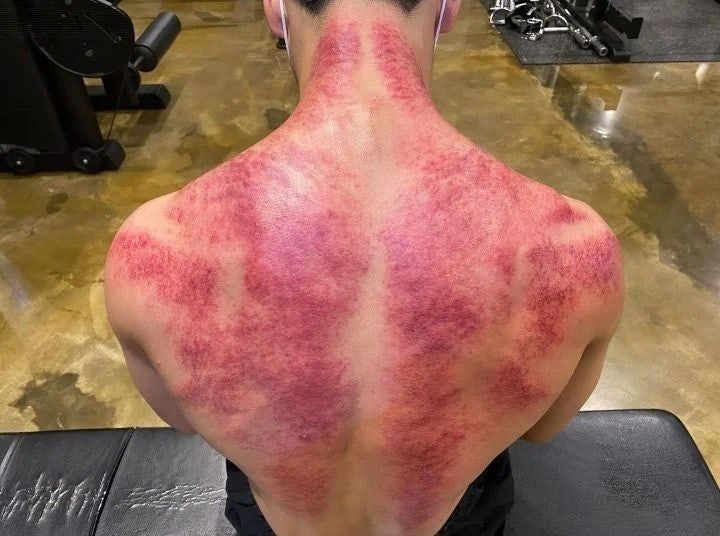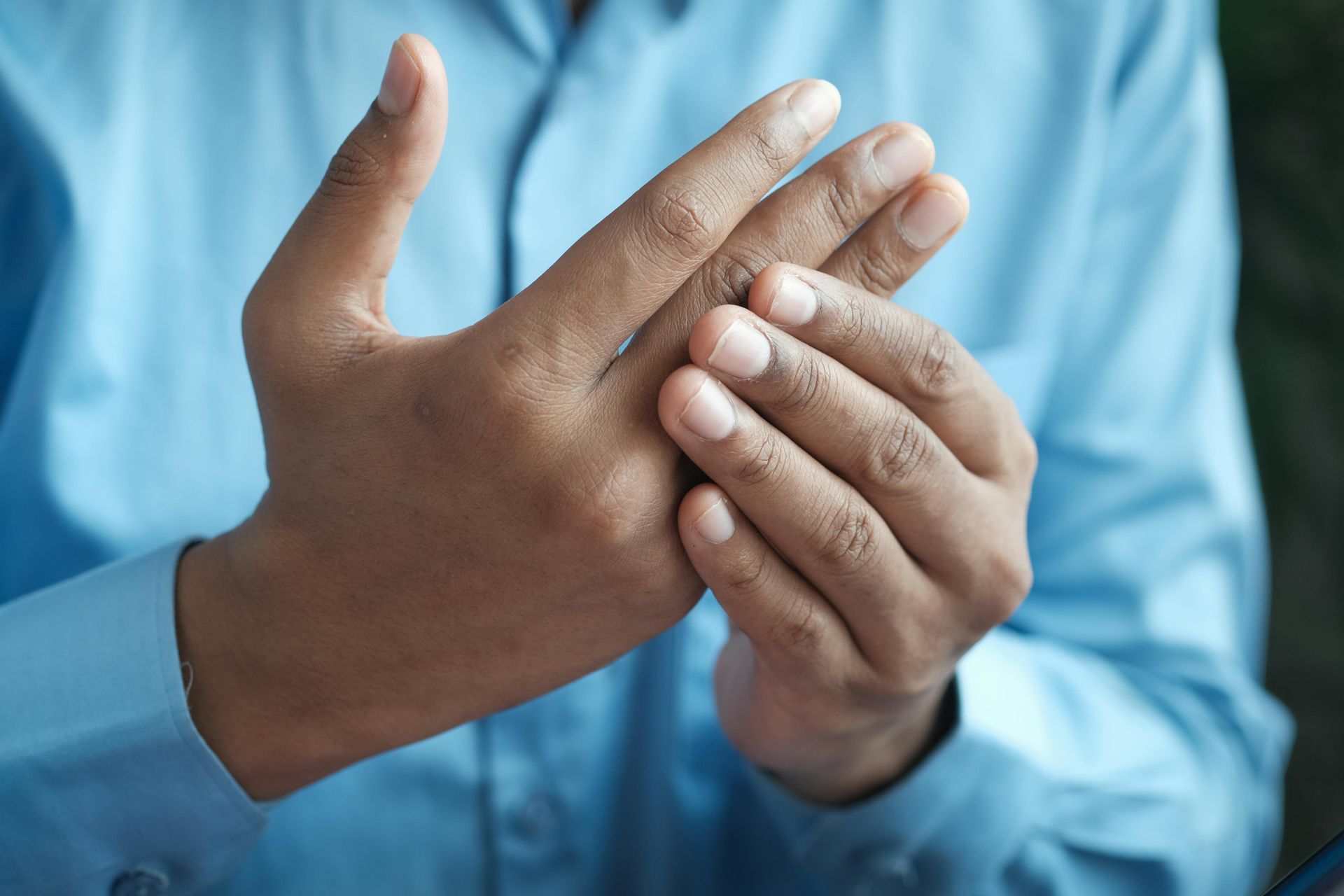The Importance of Strengthening the Iliopsoas Muscle in Seniors

As we age, maintaining mobility and balance becomes increasingly crucial for preserving independence and quality of life. One common issue seniors face is difficulty in raising their knees, often leading to postural imbalances and an increased risk of falls.
A key factor contributing to this problem is weakness in the
iliopsoas muscle,
a deep-seated muscle group essential for hip flexion and stability.
In this article, we'll explore why strengthening the iliopsoas muscle is vital for the elderly, backed by scientific evidence, and how the
psoas march exercise can effectively reduce symptoms.
Understanding the Iliopsoas Muscle
The iliopsoas muscle consists of two muscles: the
iliacus and the
psoas major. These muscles originate from the lower spine and pelvis and insert into the femur (thigh bone).
They are the primary hip flexors responsible for
lifting the thigh toward the torso, a movement essential for
walking, climbing stairs, and
maintaining balance.
Why Seniors Struggle with Knee Elevation and Postural Imbalance
Age-Related Muscle Decline
As people age, they naturally experience a decrease in muscle mass and strength, a condition known as sarcopenia. Research indicates that after the age of 50, muscle mass decreases by approximately
1–2% per year, and muscle strength declines even more rapidly. This loss affects all muscle groups, including the iliopsoas.
Impact on the Iliopsoas Muscle
- Reduced Hip Flexor Strength: Weakness in the iliopsoas makes lifting the legs more challenging, impacting gait and mobility.
- Postural Changes: A weakened iliopsoas can't adequately stabilize the pelvis and lower spine, leading to compensatory postures that may increase fall risk.
- Limited Mobility: Difficulty in performing activities like walking, climbing stairs, and rising from a chair.
Consequences of Iliopsoas Weakness
- Increased Fall Risk: Impaired balance and mobility contribute to a higher likelihood of falls, which are a leading cause of injury in seniors.
- Loss of Independence: Mobility limitations can affect the ability to perform daily activities independently.
- Chronic Pain: Postural imbalances can lead to musculoskeletal pain, particularly in the lower back and hips.
Science-Backed Evidence
Research underscores the importance of maintaining iliopsoas strength in the elderly:
- Gait and Mobility: A study in Clinical Biomechanics found that hip flexor strength is significantly associated with walking speed and stride length in older adults. Improved hip flexor strength correlates with better walking ability.
- Balance and Stability: Research published in the Journal of Geriatric Physical Therapy indicates that strengthening hip flexors improves balance and reduces fall risk in seniors.
The Psoas March Exercise: An Effective Solution
At
Good Health Group Clinic, we've found the psoas march exercise to be particularly beneficial for our senior clients struggling with iliopsoas weakness.
Benefits of the Psoas March Exercise
- Targets the Iliopsoas: Specifically activates and strengthens the hip flexors.
- Improves Knee Elevation: Enhances the ability to lift the knees during walking and other activities.
- Enhances Postural Stability: Supports better alignment of the pelvis and spine.
- Customisable Intensity: Can be adjusted to suit individual fitness levels and capabilities.
How to Perform the Psoas March Exercise
- Starting Position: Stand upright with feet hip-width apart. Use a stable surface for support if needed.
- Engage Core Muscles: Tighten your abdominal muscles to maintain balance.
- Lift One Knee: Slowly raise one knee as high as comfortable, aiming for hip height if possible.
- Hold Position: Pause for 2–3 seconds, keeping the upper body straight.
- Lower Leg: Gently lower the leg back to the starting position.
- Alternate Legs: Repeat with the other leg.
- Repetitions: Perform 2–3 sets of 10–15 repetitions on each leg.
Why It Works
- Functional Movement: Mimics natural movements used in daily activities.
- Progressive Loading: Intensity can be increased by adding ankle weights or resistance bands.
- Evidence-Based: Studies show that targeted hip flexor exercises improve functional mobility in seniors.
Personalised Exercise Programs at Good Health Group Clinic
We understand that each individual has unique needs and capabilities. Our team is committed to offering personalised care:
- Myotherapist Ian Selvarajoo: Specialises in muscle manipulation techniques to relieve tension and correct imbalances. Ian develops individualised exercise plans to strengthen affected muscles and improve posture.
- Remedial Therapist Sam Noh: Provides targeted therapies to alleviate pain and restore function. Sam adjusts exercises to suit your abilities, ensuring safe and effective rehabilitation.
- Chiropractor Tanja Nishibata: Focuses on spinal and postural alignment to address root causes of musculoskeletal issues. Tanja offers customised exercises to correct posture and enhance overall musculoskeletal health.
We not only address immediate symptoms but also provide post-treatment exercises tailored to your needs, helping you maintain improvements over the long term.
Case Studies and Client Success
Many of our senior clients have experienced significant improvements:
- Increased Mobility: Clients report easier movement when walking and climbing stairs.
- Better Balance: Notable reduction in unsteadiness and improved confidence in mobility.
- Enhanced Quality of Life: Greater independence in daily activities and reduced fear of falling.
Conclusion
Strengthening the iliopsoas muscle is crucial for seniors to maintain mobility, balance, and independence. Muscle weakness in this area can lead to difficulties in raising the knees, resulting in postural imbalances and an increased risk of falls. The psoas march exercise offers a targeted, effective way to strengthen the iliopsoas muscle, supported by scientific evidence and positive clinical outcomes.
At
Good Health Group Clinic, we're dedicated to helping you improve your strength and mobility through personalised exercise programs and professional support. We adjust exercises to meet individual needs, ensuring you receive the most effective care.
If you or a loved one is experiencing difficulty with knee elevation or balance, consider reaching out to our team for a comprehensive assessment and tailored intervention plan.
References
- Janssen, I., et al. (2002). Skeletal muscle mass and distribution in 468 men and women aged 18–88 yr. Journal of Applied Physiology, 89(1), 81–88.
- Kerrigan, D. C., et al. (1998). Hip flexor weakness in the elderly: implications for gait. Clinical Biomechanics, 13(6), 507–515.
- Powers, C. M., et al. (2015). Strengthening the hip flexors: an effective approach to improve balance in older adults. Journal of Geriatric Physical Therapy, 38(1), 17–23.
- Ries, J. D., et al. (2014). The effectiveness of hip flexor strengthening for improving dynamic balance and mobility in older adults. Archives of Physical Medicine and Rehabilitation, 95(1), 139–145.
Blogs














